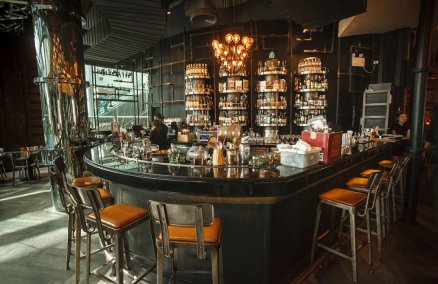Using effervescent colors like a Bollywood film mural is one of your trademarks. How do you address the traditional notions of quite a myopic and chauvinistic Bollywood cinema?
Yes, the gender roles in Bollywood films are often fixed but you have to think about the function of them, which is to raise the morale of thousands of poor people who have very little to look forward to. The fairytale romance of the prince and princess is sociologically important. My work references the glitz, glamour and iconicity of Bollywood but from there on the similarities depart—my work subverts and problematizes simplistic representations of identity and gender.
Your work incorporates a lot of your personal experiences…
My work may start from the self but in the process of making, it departs to explore broader issues about post-colonialist identity. Although I use images and artifacts that are autobiographical, in that they are from my life, my work is easily relatable and makes people think about their identity in general.
What are some of your fondest memories?
Simple things from my childhood like going to grammar school, dressing up to go to temple functions and playing hopscotch on the streets of Liverpool. Then there are fond memories from my work such as working with lovely feminist women on Mukti, the first Asian women’s magazine in Britain, collaborating with my late little brother MAGIC on various art projects and exhibiting at the Royal Academy in 1981.
How do you decide what is worth an artistic representation?
As an artist there are issues that you feel strongly about, themes that define you. Mine include my personal family history, Punjabi roots, Asian femininity and the impact and consequences of modern day consumption patterns. The references to ice-cream in my work are related to my identity because my dad used to own an ice-cream van but also the ice cream van culture that is inherent to the UK.
Other than your personal experience, what else inspires your work?
I am inspired by mythologies and stories from different traditions, especially Indian mythology. I am influenced by art traditions, especially Dada and Surrealism.
Briefly describe your artistic process.
My artist process is constantly developing. I work experimentally across a variety of mediums including print, photography, sculpture and paint. I hand treat each piece—embellishing them with gems, stickers, paint, glitter, bindis. Layering and experimentalism has informed my work throughout my career as has the relationship between image and text.
Check out Paradox Art Gallery at www.paradoxsingapore.com or visit Burman's show, Fragments of the Imagination.
Advertisement


















